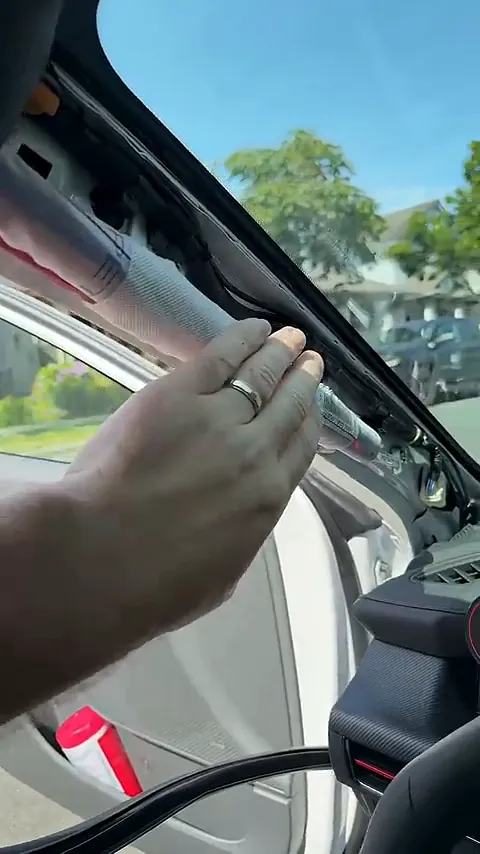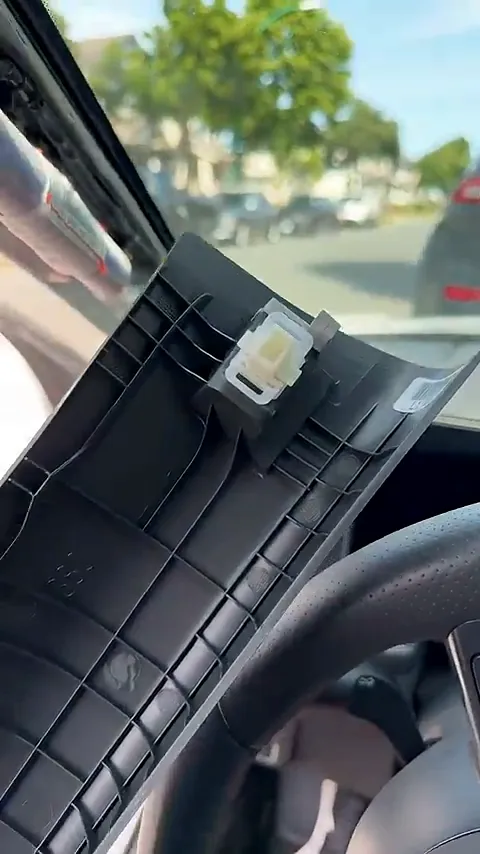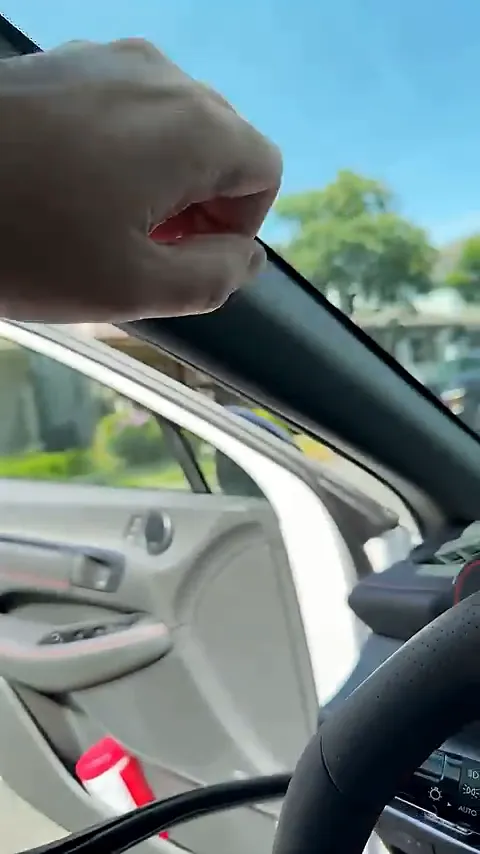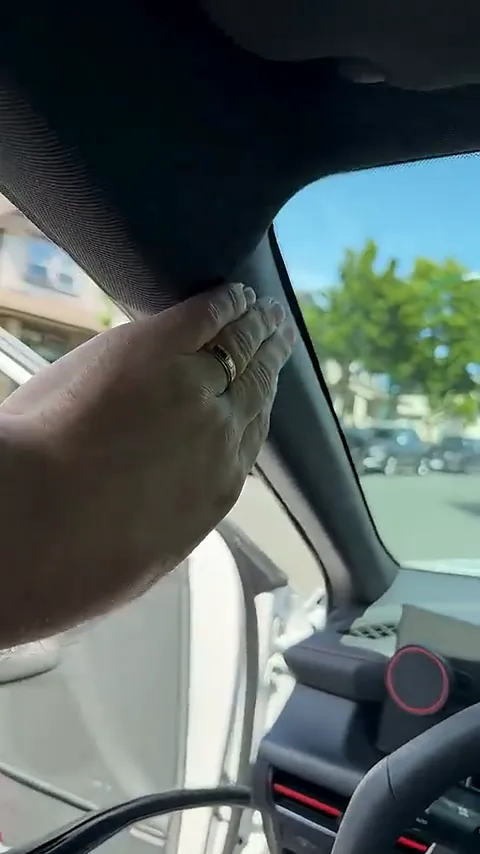Hyundai Elantra Dash Camera Installation: Running Wires Safely Behind the Airbag
At Safe Drive Solutions - Dash Cam Specialists, we understand the importance of a professional dash camera installation that is not only effective but also safe and seamless. One of the critical steps in ensuring a clean and secure dash cam setup is hiding and running the wiring correctly within the vehicle’s structure. In this article, we’ll walk you through how we install a dash camera in a Hyundai Elantra, focusing on running the wires safely behind the driver’s side airbag, specifically behind the A-pillar. This method ensures that the installation is discreet, factory-like, and most importantly, safe.

Why Proper Dash Cam Wiring Matters
When installing a dash cam, many drivers want the wiring to be as invisible as possible for aesthetic reasons and to avoid loose cables that could interfere with driving. However, the wiring must also be installed safely to prevent any interference with vehicle safety features such as airbags. Incorrect wiring can obstruct airbags or cause damage to the vehicle’s electrical system, potentially creating safety hazards.
By running the dash cam wiring behind the airbag and following the factory wiring channels, we maintain the vehicle’s integrity and ensure all safety systems remain fully operational. This professional approach not only protects your investment in a dash cam but also preserves the safety design of your Hyundai Elantra.
Understanding the Hyundai Elantra’s Airbag and A-Pillar Setup
The A-pillar is the structural frame on either side of the windshield that supports the roof and houses important vehicle components. In the Hyundai Elantra, the driver’s side A-pillar conceals the side airbag, a vital safety feature designed to deploy in case of a side collision.
During installation, it’s essential to be cautious when handling the A-pillar trim and the airbag behind it. The airbag module is delicate and must not be damaged or obstructed by any added wiring. Running wires alongside existing factory wiring behind this area is the safest way to integrate additional electrical components such as dash cameras.

Step-by-Step: Running Dash Cam Wiring Safely Behind the Airbag
1. Accessing the A-Pillar
The first step is carefully removing the A-pillar trim panel. This is done by gently unclipping the panel from the vehicle frame without damaging the clips or the trim itself. The goal is to expose the wiring channels and the airbag behind the panel.
2. Locating Factory Wiring Channels
Once the A-pillar is removed, you’ll see the factory wiring harnesses that run from the dashboard up toward the roof. These channels are designed to safely route electrical wires without interfering with airbags or other components.
3. Running the Dash Cam Wiring
The dash cam wiring is then carefully routed alongside these factory wires, hidden behind the airbag module. This ensures the wires are protected and do not interfere with the airbag’s deployment path. This step requires precision and care to avoid damaging any factory wiring or safety components.
4. Securing the Wiring
After routing the wires, they are secured in place to prevent movement or rattling. Proper securing also prevents wear and tear on the wires from vehicle vibrations over time.
5. Reinstalling the A-Pillar Trim
Finally, the A-pillar trim is clipped back into place using the original clips. The trim fits snugly and looks factory-installed, maintaining the clean interior look of the Hyundai Elantra. This step completes the installation, leaving no visible wires or loose ends.

Benefits of Professional Dash Cam Installation
Choosing professional dash cam installation services, such as those provided by Safe Drive Solutions, guarantees that your dash cam wiring is installed safely and discreetly. Here are some key benefits:
- Safety First: Proper routing avoids interference with airbags and other critical systems, ensuring your vehicle’s safety features remain fully functional.
- Clean Aesthetics: Hidden wiring preserves the interior appearance of your vehicle, avoiding dangling or exposed cables.
- Reliability: Secure wiring reduces the risk of electrical faults, disconnections, or damage to the dash cam system.
- Warranty Protection: Professional installation can help maintain your vehicle’s warranty by avoiding damage to factory components.
For more information on the importance of professional installation, check out our blog on Get Your Dash Cam Professionally Installed.
Choosing the Right Dash Cam for Your Hyundai Elantra
Once you understand how to safely install dash cam wiring, the next step is choosing the right dash cam for your vehicle and needs. At Safe Drive Solutions, we offer a variety of top-quality dash cams with features such as 4K resolution, front and rear recording, parking mode, and Wi-Fi connectivity.
Consider the following popular models:
- Viofo A229 Pro 4K Front and Rear Dash Cam - Known for its excellent video quality and advanced features.
- Vueroid D21 4K Dash Cam - Offers Sony STARVIS 2 image sensor for superior night vision.
- Thinkware U3000 Front and Rear Dash Cam - Includes smart driver alerts.
Choosing a dash cam with high video resolution and reliable parking mode can significantly enhance your protection on the road. Learn more about selecting the right dash cam in our Dash Cam Buyers Guide.
Additional Installation Tips and Considerations
When planning your dash cam installation, keep these important tips in mind:
- Use Hardwire Kits: To avoid reliance on cigarette lighter sockets, opt for a hardwire kit (like the Thinkware TWA-SH Hardwire Cable) which connects directly to your vehicle’s fuse box, providing constant power for features like parking mode.
- Select the Correct Fuse: A fuse tap kit helps you safely connect the dash cam to your vehicle’s electrical system without damaging it. We recommend our SDS Fuse Tap Kit for this purpose.
- Consider Battery Protection: Dash cams with low battery protection prevent your car battery from draining. We offer dash cams and accessories designed with this crucial feature to keep your vehicle’s battery safe.
- Parking Mode Capability: Many dash cams support parking mode, recording events while your vehicle is parked. This is especially useful for protecting your car from hit-and-runs or vandalism.
For a detailed overview of these topics, visit our blog on Dash Cam Parking Mode and How to Hardwire a Dash Cam.
Conclusion: Safe, Clean, and Professional Dash Cam Installation in Your Hyundai Elantra
Running dash cam wiring safely behind the airbag in a Hyundai Elantra’s A-pillar is a critical step to ensure a professional, clean, and safe installation. By following factory wiring channels and taking care not to interfere with airbags, you protect both your vehicle’s safety systems and your dash cam investment.
At Safe Drive Solutions, we specialize in expert dash cam installation, ensuring your wiring is hidden and secure, and your dash cam functions flawlessly. Whether you’re in Vancouver, Toronto, or surrounding areas, our mobile installation service brings professional quality directly to you.
If you’re ready to upgrade your Hyundai Elantra with a high-quality dash cam and expert installation, contact Safe Drive Solutions today to get a free quote and learn more about our services.

Drive safely and protect yourself on the road with a professionally installed dash camera that you can trust!


